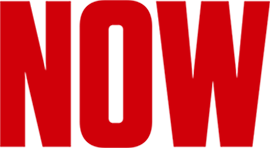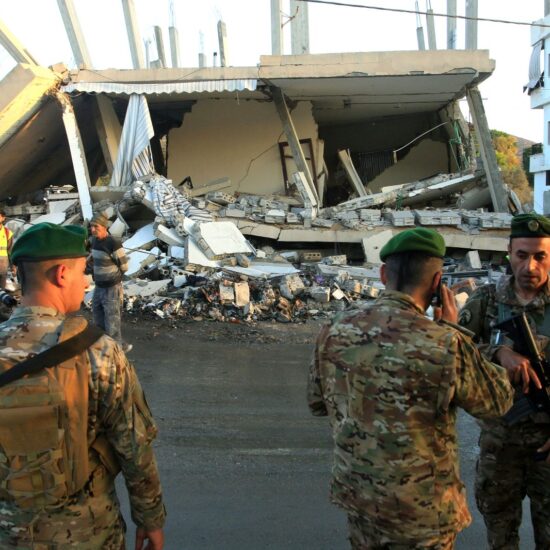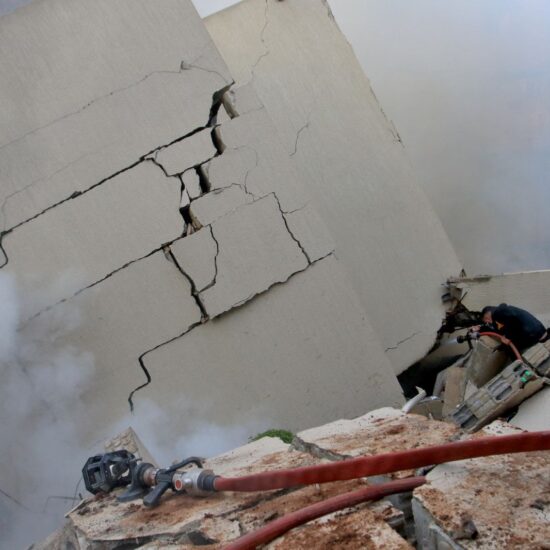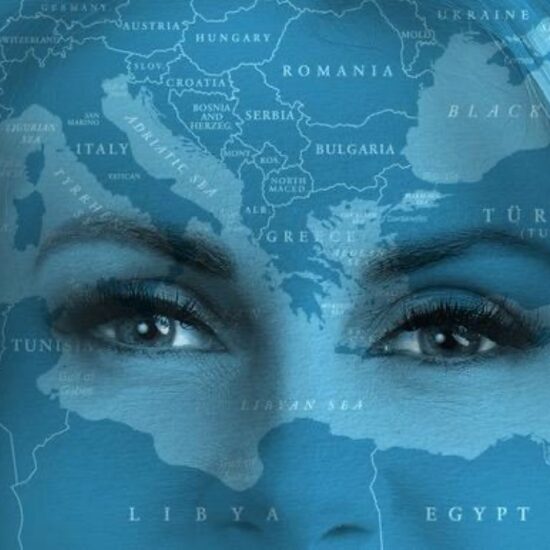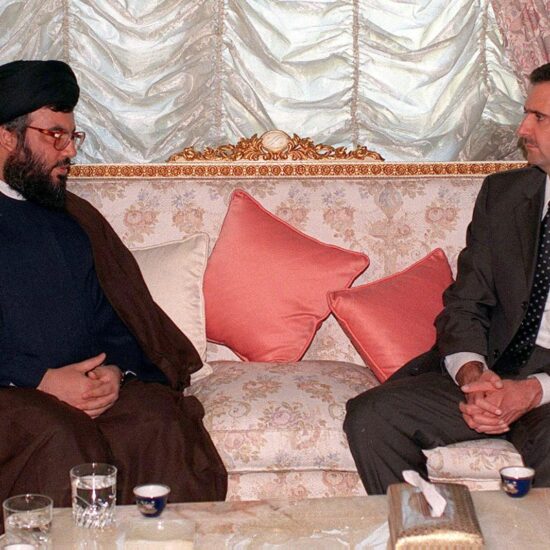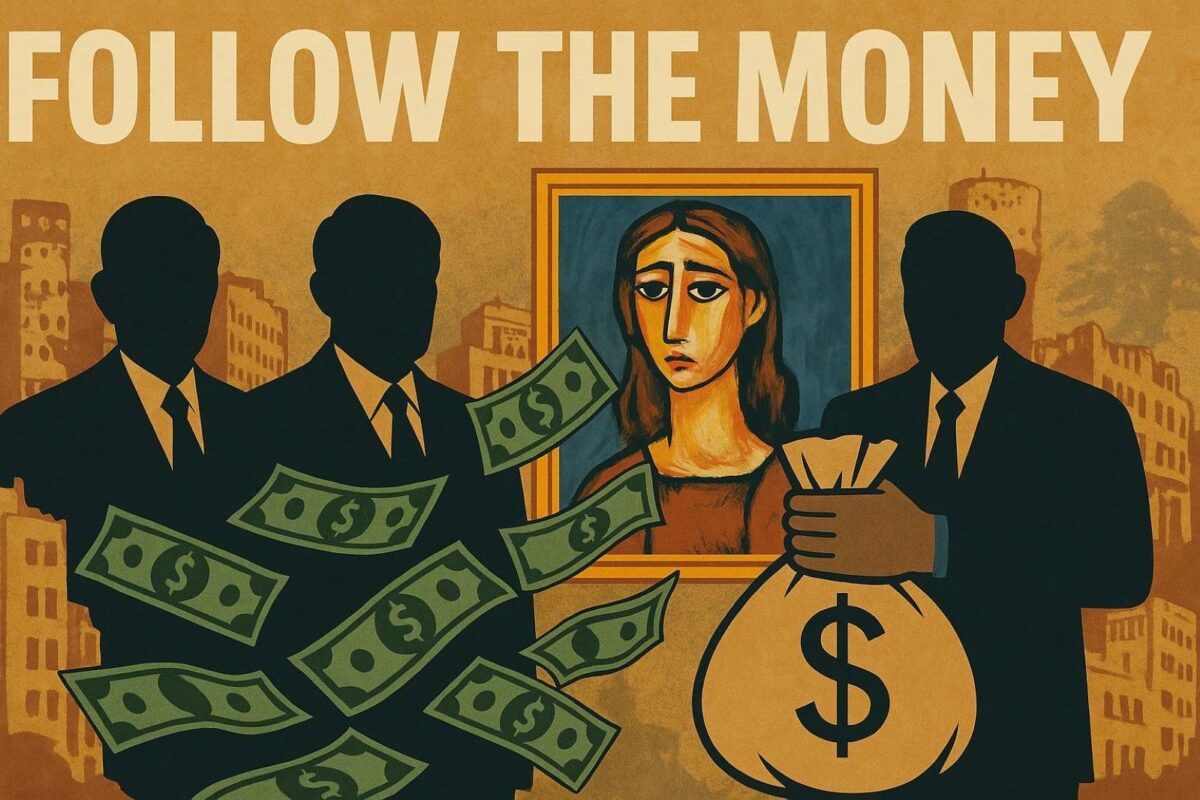
Oghenochuko Ojiri, an art dealer who featured on the popular BBC show ‘Bargain Hunt’, appeared in a London court last Friday for selling art to suspected Hezbollah financier Nazem Ahmad, already sanctioned in 2019 by the United States for money laundering to the Shia party. But this is no surprising, as artwashing is a common practice, especially in cash-based systems like the Lebanese one, and ethics a virtue that the art market has globally given up on
The global trade in art and antiquities, it is well known, is a billion-dollar industry, with a culture of privacy where single objects can attain high prices: this can attract individuals who wish to launder the proceeds of their crime, as well as raising or moving funds in support of organizations. But it is no surprise, in Lebanon as much as in other countries all over the world, that the timings of revealing these practices are profoundly politically-charged.
“The art market is highly political,” commented Reem Rizk, Lebanese researcher and cultural manager, whose work has been focusing on contemporary art practices and archival material to explore the interplay between politics, society, and the arts. “Any attempt to understand it must be accompanied by a parallel reading of the region’s politics, where these practices are unfolding.”
It is in this scenario – and under the strict terms of the British law – that Oghenochuko Ojiri, a British-Nigerian art dealer who appeared as an expert on BBC’s antiques show ‘Bargain Hunt’, has confessed of having sold artworks to a suspected financier for the Lebanese group Hezbollah: for the equivalent raised, between October 2020 and January 2022, of approximately £140,000. Fifty-three years old, owner of an art gallery in East London – the Ojiri Gallery -, he appeared at Westminster Magistrates’ Court in London last Friday, May 9, pleading guilty to eight charges of failing to disclose potential terrorist financing – as, according to both Britain and the United States, the Iran-backed group is designated as a terrorist organization – hence becoming the first person to be charged with such an offence.
Under section 21A of Britain’s Terrorism Act 2000, in fact, the British law makes it illegal for people in some sectors to “fail to disclose” suspicions of terrorist fund-raising, financing or money laundering – although Britain’s art sector became a regulated sector under the law only in 2020. In light of that, Ojiri has been released on bail – yet ordered to surrender his passport and refrain from applying for international travel documents – ahead of a sentencing hearing at the Central Criminal Court on June 6, with the maximum sentence for such an offense in the United Kingdom being five years’ imprisonment.
The Prosecutor Lyndon Harris told the court that Ojiri had sold several artworks to Nazem Said Ahmad, a dual Belgian-Lebanese citizen, whom he knew to be a suspected financier sanctioned by the United States and Britain because of links to Hezbollah. Prosecution documents summarizing the case against Ojiri said that on multiple occasions, as he put paperwork relating to sales to Ahmad in the names of “other individuals suggested by Mr. Ahmad’s associates, in what is alleged to be an attempt to disguise the true owner of the works of art,” The New York Times reported.
Harris claimed that the British dealer had dealt with Ahmad directly, negotiating sales of artworks and “congratulating him on purchases” which were sent to Dubai, in the United Arab Emirates, and to Beirut. “At the time of the transactions,” the Prosecutor added, “Mr. Ojiri knew that Nazem Ahmad had been sanctioned in the US as a suspected terrorist financier. Mr. Ojiri accessed news reports about Mr. Ahmad’s designation and engaged in discussions with others about it, indicating his knowledge or suspicions.”
A previous cooperation with the US Justice Department had already announced, in the spring of 2023, charges against Nazem Ahmad for evading terrorism-related sanctions, describing the Belgian-Lebanese financier as a “diamond smuggler and art collector” who had dealt in millions of dollars worth of goods and services: known for having once posed in his Beirut penthouse for a glossy magazine – the Architectural Digest Middle East – and featuring in a piece about the “world’s most beautiful homes and the fascinating people who live in them,” his collection included, just to name some, masterpieces by Pablo Picasso, Antony Gormley, Andy Warhol, and Jean-Michel Basquiat. When interviewed by the police, Ojiri said he did not support terrorist activity and that he had no reason to suspect or believe that Ahmad was a terrorist or money launderer: he only described him as a big name in the art-collecting world and that he knew of other galleries that had dealt with him.
The shady transactions of Nazem Ahmad
Before it was shut down, his Instagram account, where he posted regularly about his acquisitions, had about 190,000 followers. His bio read: “Art has no rules.” And indeed Nazem Ahmad acted as if there were none.
A US statement claimed Ahmad lived in Lebanon and that he had already been sanctioned by the United States for being a financier for Hezbollah in December 2019. At the time of the designation, the Office of Foreign Assets Control (OFAC) – a unit of the US Treasury Department – said Ahmad was considered a major Hezbollah financial donor who had “laundered money through his companies for Hezbollah and provided funds personally to Hezbollah Secretary-General Hassan Nasrallah:” the collector is in fact said to have gifted the former leader of the Shia party a large diamond to show support to the ‘resistance’, which he allegedly acquired from his trade in blood or conflict diamonds. The OFAC’s statement added clearly that Ahmad “stores some of his personal funds in high-value art.” However, despite the sanctions, he had used a “complex web of business entities to obtain valuable artwork from US artists and art galleries,” it specified.
Artwork that Ahmad allegedly obtained from the United States between December 2019 – when he first was sanctioned – and April 2023 – when he was charged, with eight others, of evading the sanctions by using a network of businesses to conceal millions of dollars in transactions involving art and diamonds -, was valued at more than $450,000, while an additional $780,000 in artwork from people outside the United States was also acquired in what the US said was a violation of terrorism sanctions.
The 2023 federal indictment led to headlines around the world, but less discussed has been the extent to which it detailed, with example after example, how the art market had, by the government’s accounting, played a significant role in the dealer’s scheme. According to the indictment, over a dozen galleries and artists had facilitated what investigators described as Ahmad’s deceptive methods. While none of them were charged with misconduct or alleged to have knowingly assisted Ahmad, however, the indictment portrayed the art market as a convenient channel for money laundering and circumventing sanctions.
For instance, over a year after the Lebanese collector had been designated as a financial supporter of Hezbollah – and doing business with him or any entities he controlled had been prohibited – a New York artist, seemingly unaware, agreed to sell him artwork, the indictment alleged. The government claimed that Ahmad asked the artist, whose name was not disclosed in the indictment, to avoid mentioning him to the artist’s gallery, as he preferred to stay anonymous – a tactic also seen in the recently-uncovered case involving Oghenochuko Ojiri. In 2021, the gallery, which also remains unnamed, sold six of the artist’s pieces to a “Sierra Leone-based entity” that investigators identified as a front for Ahmad, according to the indictment.
In a separate case, the indictment stated that an unnamed gallery in Chicago sold twenty-one artworks to a company Ahmad had frequently used to acquire art. The sale, which took place in March 2022, occurred nearly three years after sanctions were imposed that barred him from such dealings. According to the legal documents, the shipment to a company in Lebanon was falsely labeled as containing “wooden baby cribs” rather than artworks.
Despite US officials having openly said that Ahmad used his art to convert and shelter proceeds from his diamond trading – which ultimately was a source of funding for Hezbollah – and despite the ban, his companies continued to ship hundreds of diamonds to the US for grading, the process of evaluating their quality. One stone alone was valued at $80 million, according to the indictment. In total, federal prosecutors for the Eastern District of New York in Brooklyn reported uncovering about $400 million worth of imports and exports, primarily of artwork and diamonds, to and from the United States by entities connected to Ahmad after the sanctions were imposed: of this, more than a million dollars’ worth of contemporary art was acquired from the United States or from American nationals abroad – though the art was often undervalued to avoid tariffs.
NOW Lebanon and Hezbollah’s Blood Art
Publicly associated with Hezbollah since at least 2011, in an interview published in 2021 with Daraj, an Arabic news site, Nazem Ahmad said his passion for art was real, not a front for money laundering, and he described the charges against him as politically inspired. “I am proud I am from south Lebanon, where seventy years ago few had clothes on them,” he said from his luxurious apartment in Downtown Beirut. The feeling of social and political rise due to Hezbollah military prowess in confronting Israel during the 2006 war, and the party’s growing influence, is quite common among the wealthy Shiites who have emerged in the past two decades, and who are trying to balance their political relations within Lebanon with their activities abroad: yet, apart from being a merely sectarian issue, it is indeed a more general social behavior.
Dwelling on the struggle of his family, and on how his grandfather immigrated from Haris, his hometown in southern Lebanon, to Africa due to poverty at the beginning of the last century, in the interview he remembers how much his father suffered there before he started the diamond trade in Sierra Leone, which became the family’s trade between Africa and Belgium – a major headquarters in the diamond trade – and where he obtained citizenship, after starting collecting and selling art works.
NOW Lebanon’s 2023 report – Hezbollah’s Blood Art, among the first titles to feature this network of illicit art trading among the party’s ‘velvet community’ – stressed how, for years, Ahmad skirted international regulations and safeguards by using business associates, front companies and family members in a complex ‘layering’ scheme of cash transfers, bypassing cash reserve restrictions to avoid investigation by financial authorities. Apart from having a connection with art, in fact, Ahmad had connections with many of the Hezbollah financiers classified as such on the US sanctions lists, including Kassem Tajeddin and Mohamed Bazzi. At the time of the first indictment, sanctions even linked him to Saleh Assi, Adham Tabaja and Qassem Hojeij in the case of buying a $240 million land, which Washington considers a front for Hezbollah: that was one of the reasons to issue sanctions against him. “I bought lands which made Walid Joumblatt and Saad Hariri crazy angry, and accused Hezbollah of purchasing. But I mean isn’t it ridiculous for Hezbollah to need to buy land in order to send missiles to Palestine? I bought the land. Kassem Hojeij and I did. I had $150 million, and I asked Hojeij to pay the rest,” the accused responded.
Through operations, both legal and illegal, across Lebanon, Dubai, the UAE, South Africa and Hong Kong, the collector and diamond trader took advantage of the often opaque and inscrutable nature of the global luxury commodities market, focusing primarily on diamonds and art.
US regulators have long complained that art transactions happen in such secrecy – with the true parties seldom being publicly identified – that the market has become ripe for money laundering and tax evasion. American art dealers and auction houses argued that the threats have been exaggerated and the abuses are few: some auction houses claimed they have programs to ensure they possess a firm understanding of the underlying customers involved in transactions, while others – often smaller galleries and individual artists – said it’s unreasonable to expect them to perform extensive background checks of clients, especially if they have taken measures to obscure their identity. So far the US government has refrained from adopting regulations like those enacted recently in Europe that require art dealers to verify, next to the identities of their clients, also the sources of their wealth.
However, beyond the depth of legal action of some jurisdictions over others, since Hezbollah has been designated as a terrorist organization in multiple international laws – not only the United States -, many other countries have outright banned transfers of money to the party, including Australia, Canada, Egypt, Japan, Saudi Arabia, the United Arab Emirates, and the United Kingdom – as the recent Westminster case showed, hearing an individual at the renowned Criminal Court for simply “failing to disclose” potential terrorist financing.
But while Nazem Ahmad’s international assets have now been frozen, no action has been taken against the trader in Lebanon, his native country, where he remains at large, despite having evaded countless taxes and depriving the Lebanese treasury of much-needed fiscal revenues during a time of crippling national crisis: an issue common to many other Lebanese. And just like many others, despite having been on the sanctions list for six years, his extravagant lifestyle remains unaffected, as he continues to trade in art, displaying pieces throughout the lobby of his opulent building in Downtown Beirut, surrounded by upscale restaurants and cafés.
Litmus test of a widespread corruption
“So we’re going to talk about emotions,” she said laughing when asked about how she feels – as a Lebanese citizen, and as an artist – about Ahmad’s freedom. “To be very honest with you,” Reem Rizk confessed in a virtual interview from Venice’s Biennale, “Today, Nazem Ahmad is the least of our problems in Lebanon. I wouldn’t have said this a year or two ago, but now there are far more pressing issues that have long surpassed his case.” And she listed: a geopolitical crisis, an ongoing occupation, an expansionist threat, and a broader system of impunity, that the case of Nazem Ahmad becomes a drop in an ocean of injustices. “Many criminals in Lebanon circulate freely – not just him. Politicians and bank owners roam without consequence; they are thieves who have stolen the people’s resources, savings, and dreams. I won’t single out Ahmad simply because he’s linked to Hezbollah – my aim is to denounce all those who exploit and betray the Lebanese people.”
According to Rizk, Ahmad’s case is just the litmus test to unveil such a system of corruption that allows him – and people like him – to act undisturbed. “Nazem Ahmad isn’t free because Hezbollah is protecting him – Hezbollah can barely protect itself at this point. It’s the system that’s shielding him. Recently, I’ve sensed a growing tendency to focus narrowly on Hezbollah, but when you consider the broader context, it becomes clear that the problem is regional in scale, and Hezbollah is only one part of it.” She concluded: “My anger is directed more at the system that enables Nazem Ahmad’s freedom than at him personally.”
Money laundering and artwashing are practices that have been happening for decades, and not only in Lebanon: art is in fact the easiest market to launder money, because it is classified as a non-fungible good: it does not have a standard market price; its value depends on individual traits, provenance, or subjective appreciation. Any recognized artist can sell anything defining it as a piece of art, pricing it hundreds of thousands of dollars. Commenting on the matter, Rizk warned: “We must recognize that major art sales involving prominent international collectors often coincide with practices like artwashing and money laundering. These activities frequently occur alongside large auction houses, many of which are based in Britain, such as Christie’s and Sotheby’s. Naturally, money laundering is not associated with emerging artists selling works for a few thousand dollars; rather, it is linked to high-value art transactions.” She added, “I’m not surprised that the British court case is emerging at a time when global attention is focused on Hezbollah. I believe this is a political strategy aimed at diverting public attention from the real issue, which goes beyond sectarian lines.”
“Nazem Ahmad has been building his collection over the course of twenty or thirty years – such extensive collections aren’t assembled overnight,” the researcher continued. “The timing of exposing his activities is clearly politically motivated.”
Under their watchful eyes
Rizk tackled the issue in a research article published for the International Journal of Persian Literature in 2024, titled ‘Under the Watchful Eyes of the Supreme Leader: Iranian Politics and the Art Market’, where, she said, “It was my duty – and my responsibility – to examine the country’s politics in order to truly understand what is happening in its art market.”
Sanctions, she wrote in the paper, mentioning Mehrnaz Shahabi’s previous research, resulted in the devaluation of Iran’s currency, bringin the prices of art supplies to increase drastically, yielding the availability of materials and impacting the artwork’s quality, quantity, and even dimensions. “Consequently,” the article reads , “the prices of artworks have dropped dramatically, turning the Iranian market into a paradise for collectors and dealers – yet only for those who can smuggle money into the country.”
Aiming at studying the relationship between politics and the art market by adopting the Iranian model to analyze how the political advancement of the Islamic Republic influenced aesthetics, art production, and the art trade – that ultimately became a hidden and unregulated market where the sale of artworks is muddled with money laundering and illegal exchange -, the article’s discussion can be easily applied to other ruling élites: all part of a political circle, despite acting outside of it. “Not only Hezbollah, but almost all political parties with wide-reaching networks have art collectors connected to them. These collectors often support the political goals of their affiliated parties in various ways. Much like the situation in Iran, many of these collectors are involved in and benefit from the larger political power systems. Because of this close relationship between politics and art collecting, it becomes very difficult to separate one from the other,” the researcher explained.
Aside from political factors, though, the art market generally lacks a central regulating body, operating with a degree of immunity, prompting questions about its accountability and transparency: private collectors and investors, in Iran and in Lebanon, are not legally obligated to disclose their spending and purchases, contributing to the challenge of obtaining rigorous data on art transactions. In fact, referring to the Islamic Republic’s context, the article reads, “accurate figures for art trading are impossible to divine, because only public auction sales are overt. Private treaty sales by definition are not – unless perhaps purchased by a publicly funded institution or publicly listed company, both of which types of organization are, or can be, required to publish their expenditures.” It comes clear that without transparent regulations and oversight, there is a risk of facilitating unethical practices such as lobbying, money laundering, tax evasion, and the circulation of counterfeit artworks. In addition, the absence of accurate data on art transactions can distort market perceptions, leading to inflated prices, market manipulation, and decreased confidence among investors and participants.
This lack of transparency not only undermines the integrity of the art market but also poses broader risks to financial systems and regulatory frameworks. In financial terms, the art market represents a prudent model of a free economy based on minimum regulation: this means that while laws targeting money laundering through the acquisition of art are in place, economic restrictions within the art market are nonexistent. The result is a hidden, uncertain, and sometimes questionable market. At the tenth Tehran Auction in 2019, for example, a work by the late Iranian artist Monir Shahroudy Farmanfarmaian sold for $400,000, setting a new auction record for the artist. However, collectors and experts commented: who knows where the money went? It could have stayed in Iran, or it could have been sent abroad. While, in fact, it is difficult for many collectors outside Iran to buy art from the country, the art trade has become a popular avenue for wealthy Iranians to transfer substantial sums from Iran, primarily to the UAE, and subsequently to the United Kingdom, and the United States.
Artwashing, money laundering and the technological shift
But there are not only geopolitical and legislative aspects to impact the art market: global revolutions, like the current technological one, are deeply reshaping it too.
“The only thing technology is doing well is dismantling the traditional nature of the art market,” said Rizk, with a hint of cautious optimism. She continued, “The art market is undergoing significant changes: while works by iconic artists like Picasso and Dalí still attract high prices, younger collectors are increasingly less interested in classical art forms such as historical paintings and sculptures. Instead, they are drawn to digital and AI-generated art. Just as technology reshapes many aspects of our lives, it is transforming the art market. Major auction houses face challenges adapting to these shifts. The ways art is bought, created, and appreciated are evolving, along with changing collector interests. Established practices like money laundering in the art world are also adapting to new realities. Today, some artists accept cryptocurrencies such as Bitcoin as payment, reflecting how art transactions mirror broader societal and technological changes.”
However, Rizk warned that new technologies could also enable more complex forms of money laundering. “If regulating traditional, physical art transactions is already difficult, controlling virtual currencies is even more challenging,” she said.
Lebanon’s case, moreover, seems to be the ideal, fertile ground for illicit financial activity. On one hand, the country’s banking secrecy laws hinder authorities from scrutinizing accounts potentially linked to illegal operations. On the other, its predominantly cash-based economy facilitates money laundering by obscuring the sources and movements of funds. These vulnerabilities are compounded by a generally opaque and passive market, the lack of stringent sanctions legislation, and a widespread institutional neglect – or deprioritization – of thorough investigations into such matters. Moreover, auction houses allow clients to buy and sell anonymously, enabling bad actors to fabricate transactions that drastically manipulate asset values with little regulatory oversight or accountability.
Unmasking hypocrisy: the art is us
I asked Rizk whether some space, in today’s art world, is left for morality. She laughed with bitterness: “Ethical standards are nowhere to be found.” she replied. “Art reflects the times we live in. Since the world’s moral compass has been shattered, how can we expect morality in the art market? Is there any sense of ethics guiding those who deliberately starve, torture, massacre, and deny people access to healthcare, clean water, and proper housing? The Arab world, the West, and all of us are witnessing the Israeli-induced starvation and ethnic cleansing in Gaza – and we remain silent. Because we have all lost our morality, just as the art world has today.”
In these catastrophic times, the response of art traders came in the form of a slap of grotesque paroxysm. The news, in the middle of Israel’s brutal onslaught on Gaza, of a Chinese cryptocurrency businessman, Justin Sun, who after having purchased a $6.2 million art piece consisting solely of a banana duct taped to a wall, ate the piece, the banana, the art. “Many friends have asked me about the taste of the banana,” Sun wrote in a post on X alongside a video of him eating the multimillion-dollar Maurizio Cattelan piece called Comedian. “To be honest, for a banana with such a back story, the taste is naturally different from an ordinary one. I could discern a hint of what Big Mike bananas from 100 years ago might have tasted like.”
Does art reflect the time we’re living in – or does it reflect ourselves? The immorality and the amorality we are witnessing all over: are they described by the art world, or do they contribute in prescribing its terms and forms? To reflect on it, Rizk invited me to look at this year’s Venice Biennale. The Venice Biennale of Architecture embodies many of the contradictions at the heart of today’s art world. The curatorial theme, Intelligens: Natural. Artificial. Collective., sets out to examine the intersections between natural, artificial, and collective intelligence in architecture. It calls for adaptive, inclusive, and sustainable design in response to urgent global challenges such as climate change, desertification, and water scarcity. This ecological narrative is undoubtedly appealing to both audiences and funders.
“Yet when we look at how the Biennale is actually produced, the contradictions become hard to ignore. The extensive use of AI, the overpriced tickets and catalogues, the material waste generated by temporary national pavilions, and even the central exhibition at the Arsenale—all of these undermine the very sustainability values the Biennale claims to promote. In my view, art should move beyond merely representing problems; it should confront them and seek tangible solutions”.
There have been promises to recycle the materials used in the exhibition’s construction, but whether these will be meaningfully implemented remains to be seen. What is certain is that the Biennale’s core budget exceeds €20 million – and that does not include the individual budgets of national pavilions, many of which are publicly funded. For example, the German pavilion alone received €650,000. One has to ask: could this money be more wisely invested in artistic practices that take real, immediate action, rather than in costly spectacles that risk reinforcing the very issues they claim to critique? In such a context, it’s difficult to speak meaningfully about morality.
Commenting on Nazem Ahmad’s former Instagram bio, Rizk argued: “There should be rules, of course. Art does have rules. Rules of morality, virtue, and ethics. Art was once a force of resistance – a voice for truth, freedom, and justice. It existed to challenge corruption and denounce illegitimate power. Every artistic movement emerged in response to a flaw in the system, each with its own internal logic, its own set of principles. From social practice to feminist art, the message was always clear, always urgent. But today – what is the message? The world is collapsing, and instead of confronting this collapse, artists seem to be complicit in it. Silent participants in the very systems they once sought to disrupt.”
It represents us, I replied. “If art represents the people, then it is succeeding in reflecting our indifference in the face of an unprecedented global collapse,” she followed. And so does its market: from Nazem Ahmad, to Cyprus, Iran, Russia, England, the United States, uniting the wealthy classes of all countries in the same shamelessness with which they look at money, in spite of their planet, their people, their values.

